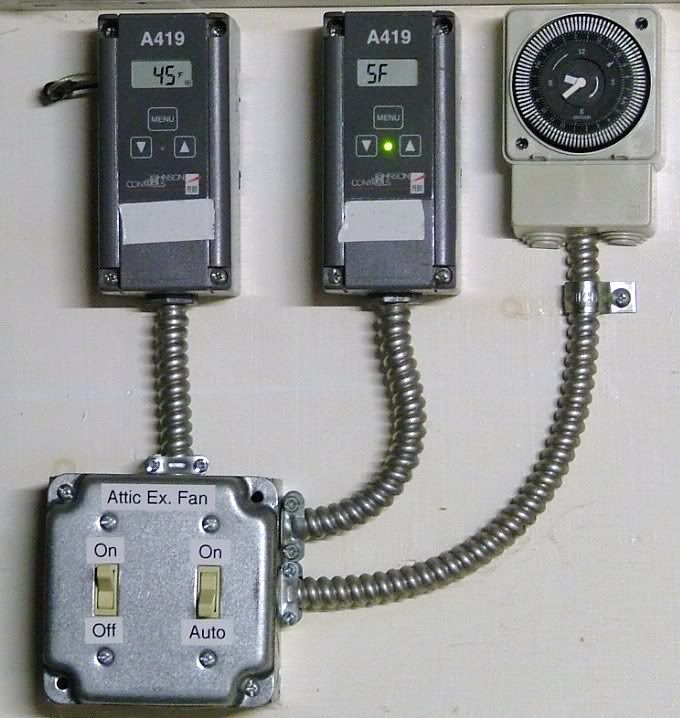electricmanscott
Senior Member
- Location
- Boston, MA
I have a customer that has a standard attic vent fan with a t stat control that activates when the temp rises and deactivates when the temp goes below the set point.
They want to have it run in the winter too to draw in cold air to help prevent roof snow melt and ultimately ice dam prevention.
I can't think of a good way to accomplish this. Any ideas?
They want to have it run in the winter too to draw in cold air to help prevent roof snow melt and ultimately ice dam prevention.
I can't think of a good way to accomplish this. Any ideas?

